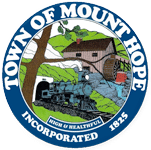 The most effective stormwater management programs are tailored to protect the community’s assets while solving its problems and meeting its particular needs. Designing our stormwater management program to fit our specific circumstances required gathering information about existing stormwater problems and potential sources, as well as identifying natural resources, watersheds, and geographic areas that are valuable and potentially vulnerable to impacts from stormwater.
The most effective stormwater management programs are tailored to protect the community’s assets while solving its problems and meeting its particular needs. Designing our stormwater management program to fit our specific circumstances required gathering information about existing stormwater problems and potential sources, as well as identifying natural resources, watersheds, and geographic areas that are valuable and potentially vulnerable to impacts from stormwater.
Table Of Contents:
- Waterbodies of Concern
- Geographic Areas of Concern
- Non-Stormwater Discharges
- Addressing Pollutants of Concern
- Other Related Links
Waterbodies of Concern:
| WAter of Concern | Pollutant of Concern | Additional Detail |
|---|---|---|
| To Be Determined | Floatables, Silt and Sediment, Suspended Solids, Phosphorus, Pathogens, Oil and Grease, Nitrogen, Metals, Oxygen-Demanding Organics, Pesticides | To Be Determined |
Geographic Areas of Concern:
Geographic Area of Concern Specific Locational Information Additional Detail
To Be Determined Town of Blank line to Sampleville Littering
Non-Stormwater Discharges:
The following non-stormwater discharges are typically exempt from the need for SPDES permit coverage. However, the State has determined the following types of discharges to be substantial contributors of pollutants to this particular MS4. As such, the identified discharges are considered illicit and must be addressed by following the illicit discharge minimum control measure (“MCM”) requirements.
Even if these non-stormwater discharges are determined not to be substantial contributors of pollutants, the MS4 has elected to address the following types of discharges in their stormwater management program (“SWMP”).
None Specified.
Addressing Pollutants of Concern:
In the broadest sense, how the community will address pollutants of concern and specific areas of concern is accomplished through the Stormwater Management Program Plan as outlined within this website. More specifically, to address these issues it is necessary for the MS4 to undertake several critical stormwater management tasks such as, but not limited to: defining community goals for stormwater management practices; tailoring local laws to meet stormwater management goals and objectives; supporting land use planning and decision making to accomplish the best methods for managing stormwater in developed or developing areas; providing for community education and public participation, and managing municipal operations in a way to reduce pollutants in stormwater.
To assist regulated communities in accomplishing all necessary tasks associated with stormwater management, New York State has required MS4s to meet specific components within six Minimum Measures. For each Minimum Measure, the MS4 must set goals and select specific activities that will reduce pollutants of concern to the maximum extent practicable. Specific elements associated with these six Minimum Control Measures are described further in the website under the headings of:
Public Education and Outreach
Public Involvement and Participation
Illicit Discharge Detection and Elimination
Construction Site – Stormwater Runoff Control
Post Construction Stormwater Management
Pollution Prevention and Good Housekeeping for Municipal Operations
